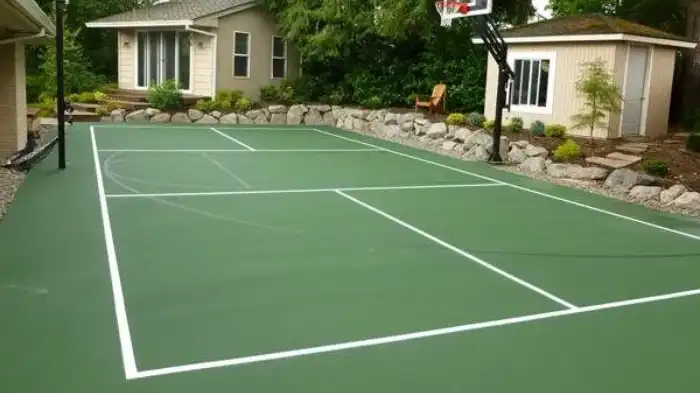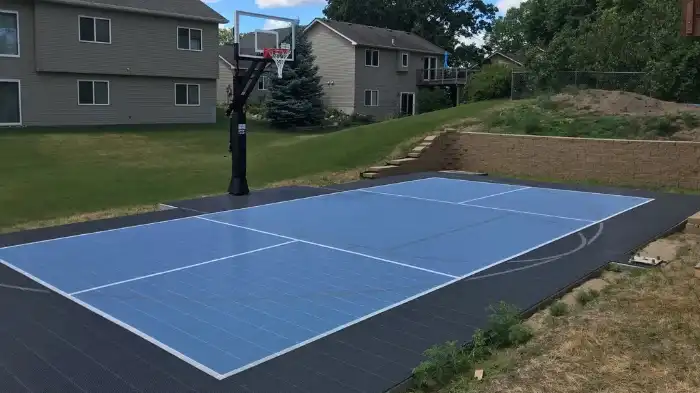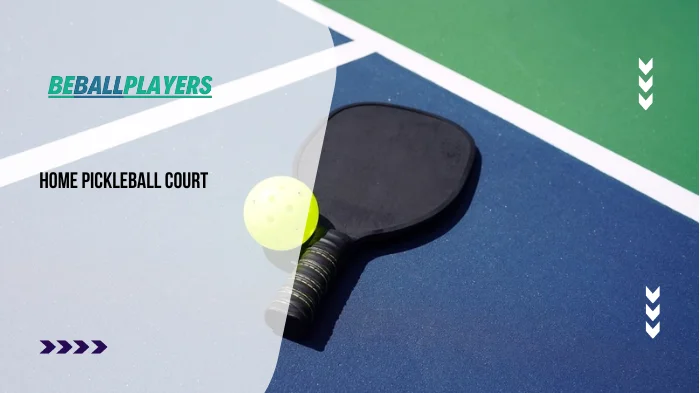Pickleball has gained immense popularity in recent years, and it’s not hard to see why. This exciting sport combines elements of tennis, badminton, and ping pong, creating an enjoyable and engaging experience for players of all ages. If you’re a pickleball enthusiast looking for a convenient and accessible way to practice and play, then consider setting up a pickleball court right in your own backyard.
In this blog, we will explore the benefits of having a home pickleball court, the necessary steps to construct one, and the joy it brings to your friends, family, and neighbors.
The Advantages of a Home Pickleball Court

1. Convenience and Accessibility:
Having a pickleball court at home means you don’t have to travel to a local sports facility or community center. You can play whenever you want, without the hassle of scheduling and commuting. It’s a great way to stay active and improve your skills right in your own backyard.
2. Privacy:
A home pickleball court offers privacy, allowing you to enjoy the game without worrying about prying eyes or crowded public spaces. You can freely practice your shots, work on your strategy, and have intense matches with your friends and family.
3. Customization:
Another advantage of a home pickleball court is the ability to customize it according to your preferences. You can choose the court dimensions, the type of surface, and the color scheme that suits your tastes. It becomes a personal space that you can design to enhance your overall playing experience.
Constructing a Home Pickleball Court
Step 1: Determine the Available Space
The first step in constructing a home pickleball court is to assess the available space in your backyard. Find an area large enough to accommodate the court dimensions, which are typically 20 feet wide by 44 feet long, for doubles play. Ensure the space is clear of any obstructions such as trees or hedges.
Step 2: Prepare the Surface
Once you have determined the space, it’s time to prepare the surface. Clear any vegetation or debris, and level the ground. Ideally, the surface should be as flat as possible to ensure fair gameplay.
Step 3: Mark the Boundaries
Using marking paint or chalk, mark the boundaries of the court. Remember to adhere to the official dimensions of 20 feet wide by 44 feet long. It is recommended to use a measuring tape and stakes to ensure accuracy.
Step 4: Install the Fence
To prevent the ball from going out of bounds and to add a professional touch, consider installing a fence around the court. A mesh or chain-link fence works well, ensuring that the ball remains within the court area.
Step 5: Surface Material
Choosing the right surface material is crucial for a home pickleball court. The two most common options are concrete and asphalt. Concrete provides a solid and durable playing surface, while asphalt offers better shock absorption. Depending on your budget and specific needs, select the surface material that suits you best.

The Joy of a Home Pickleball Court
Having a home pickleball court not only allows you to enjoy the sport conveniently, but it also brings joy and entertainment to your friends, family, and neighbors. You become the go-to destination for pickleball enthusiasts, creating a sense of community and camaraderie. Playing with loved ones, hosting tournaments, and witnessing the improvement in your game are all experiences that make a home pickleball court a valuable addition to any backyard.
Conclusion
Building a home pickleball court is a fantastic investment that brings countless benefits. It provides convenience, privacy, and customization options, allowing you to fully enjoy the sport on your terms. Constructing a pickleball court may require effort, but the joy and fulfillment it brings to you and those around you are well worth it. So, start planning, gather the necessary materials, and get ready to embark on an exciting journey of pickleball right in the comfort of your own backyard.
Frequently Asked Questions
Ideally, you’ll need a minimum of 30 feet wide by 60 feet long for a pickleball court, but if you have a smaller area available, you can resize it proportionally. Just make sure you have enough space for the court, including the boundaries and safety areas.
The most popular and recommended surface for a home pickleball court is an acrylic or asphalt surface. These materials provide the best performance, durability, and traction for pickleball play. However, you can also use concrete or even compacted gravel as alternatives.
The cost of building a home pickleball court can vary depending on factors such as the size, surface material, and additional features like fencing or lighting. On average, you can expect to budget between $5,000 to $15,000 or more for a complete installation. However, you can also opt for DIY options or repurposing existing spaces to reduce costs.
Absolutely! Building a home pickleball court doesn’t require advanced DIY skills. There are various DIY court kits available that provide step-by-step instructions and include all the necessary materials, such as court lines, net posts, and even paddles and balls. If you prefer, you can also hire professional installers to ensure a smooth and hassle-free construction.
Like any outdoor sports surface, a home pickleball court requires regular maintenance to ensure its longevity and optimal playing conditions. This includes cleaning debris, leaves, and dirt regularly, patching or resurfacing any damaged areas, and perhaps applying a fresh coating every few years. Additionally, maintaining the net, lines, and surrounding fences or barriers is important for safety and aesthetics.

